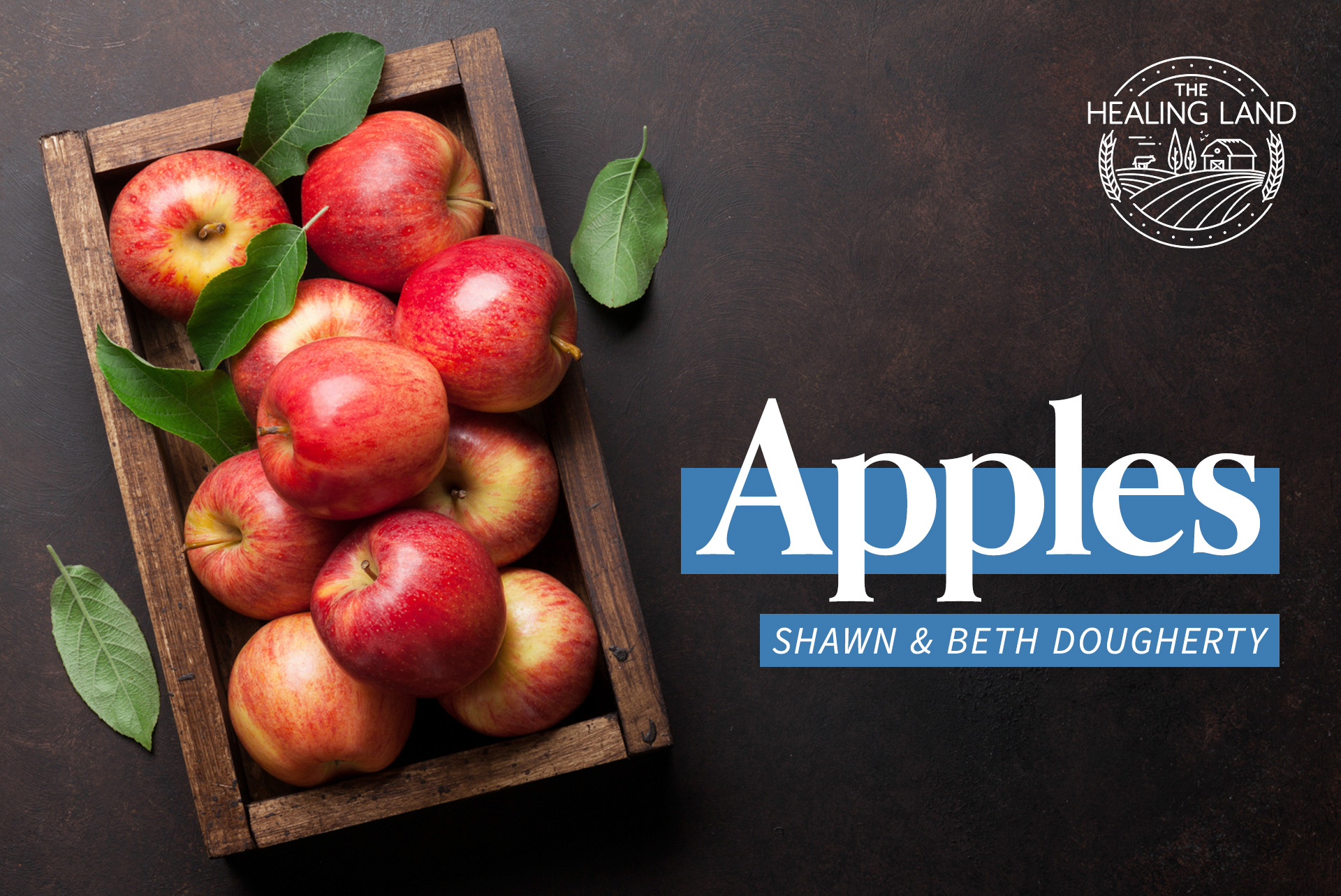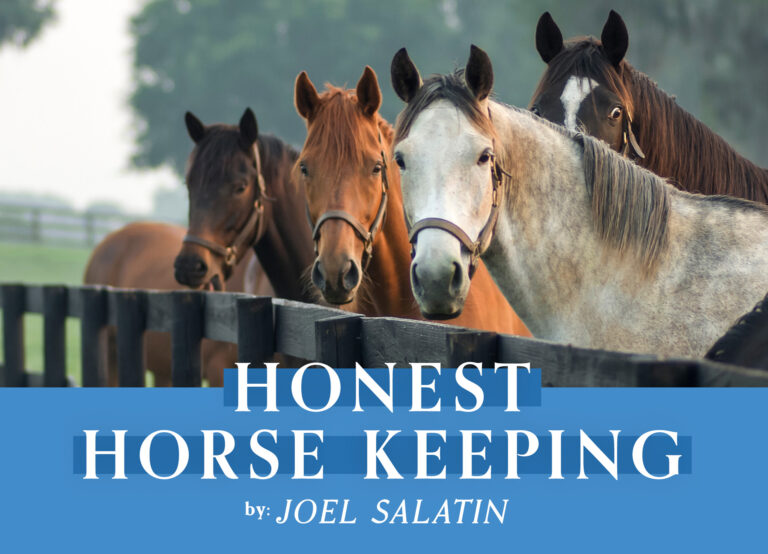by Shawn and Beth Dougherty, Plain Values
A PLENTIFUL HARVEST
The new apple trees in the orchard are bearing well this year, with russet and yellow-green fruit studding the young branches. In the convent orchard, some of the older trees are taking a sabbatical year. They will only produce a tiny crop, but enough mature trees will bear that there will be plenty of apples for the farm.
APPLE-SORTING
There’s a logic to sorting apples, and no matter the size or quality of the fruit, nothing need go to waste. Windfall apples, the ones that come down naturally, are first to find a home; often wormy or frost-scarred, they are the natural prerogative of roaming chickens, turkeys, ducks, and geese. Pens of young laying hens will be run under the trees, while older birds who have the liberty of the farm make regular patrols looking for recently fallen fruits. The wild turkeys who make frequent visits will glean anything the chickens missed.
Children take their share of the better apples. They pull down a promising-looking pippin on their way to pasture or barn; in leisure time, they climb high in a barnyard tree to a favorite perch and eat all the apples within reach. The barnyard tree has smaller fruit, but the children insist it has the best flavor! Older people, too, secure an apple on their way to the afternoon milking, taking large bites down to a generous core, this last finally to be shared with a favorite milk cow.
Then there is the real harvest, which is going on right now: ripe, fallen fruit going in one set of buckets, picked fruit in another. Once collected, the apples will be sorted again. The largest and most blemish-free will be peeled and sliced for drying, canning, or freezing. Smaller apples, misshapen by sucking insects but not worm-ridden, will be roughly quartered and cooked long and slowly in the largest kettle for applesauce—a must with roast pork—or apple butter to go with our breakfast toast and biscuits. Even the wormy fruit, most damaged of all, is still valued. Crushed and pressed, it will yield gallons of cider; and when the cider has lost its sweetness, it will make vinegar for the coming year.
Nothing is wasted. Peels, seeds, cores, pomace—all the detritus from apple harvest—have a final stop in the pig pen. Three or four young pigs and the last of the big lard hogs take every calorie gratefully, if not politely, and transform it into bacon, ham, and pork chops—and rich, black compost.
HUMAN CROPS
Apples, when we stop to think about it, are kind of like people: of many different sizes and conditions, all are to be valued, all have a role to play, and none are dispensable.
There are the youngest people, who, from the time they can carry an egg without dropping it, are assigned to the daily collection in the hen house or to search for stolen nests in the barn. Older, they can help pick green beans and learn how to carefully gather the pods without breaking the plants. For children, tomatoes are easier to see and harvest. If they pick them too soon, we show them how to ripen them on a windowsill. Calves fed from the bucket are the natural province of young children, each taking to each, youth helping youth to grow.
More serious is the work of children just a little older: sometimes hours of hoeing, weeding, thinning, picking. The braiding of onions and garlic (braiding is still the most effective way of storing them long-term, each pendant bulb being held separate and dry) can fill several long afternoons in the shade of the porch. Afterward, there is the satisfaction of a summer kitchen hung with heavy gold, purple, and white garlands of drying bulbs. Berrying is the children’s, too, with its combination of mission and freedom, work and independence, and the lovely, jeweled pails to come home with at last.
Older yet, with strong young bodies–—but minds still needing discipline and direction, half-adult, half-child—young people begin to take on the responsibility for matters that will affect family and community for the entire year to come. Canning is one province of the young women on our farm. Jar after colored jar will be put down in the cellar to be food for the coming winter. Jam making, and the freezing or drying of fruit, mushrooms, and herbs, are theirs as well. Milking, and milk handling, are largely done by women, too. The fine points of milk fermentation are gradually attained more by feel than instruction until any woman in the house can set a good sour cream and pack a shapely ball of butter.
The boys, meanwhile, have moved further out on the farm. Big jobs are shared by everyone, but the boys and men take the lead, do the heaviest work, and handle the largest tools. They take the lead on butchering with its hours of cold fingers and sharp knives and hauling load after load of firewood to the woodsheds. Tractors and chainsaws are in their jurisdiction, and building, repairing, and salvaging are under their headship.
GOD’S ORCHARD
It occurs to me that our small town values its people similarly. On his customized scooter, Old Wallace is to be seen all over town, washing shop windows in winter and summer. He has done this job for over forty years, independent and living mostly out of doors, altogether to be envied. Mariah, who walks dogs six in hand for working people and elderly, has the most robust cardiovascular health in town and is welcomed everywhere.
And there’s Big Hosea, both orphan and childlike, who lived for decades in a shack in the lumber yard. Long gone now, Hosea did heavy work all over town, stacking firewood, moving brick and block, digging trenches. He went to a different church each Sunday, making the rounds with ecumenical regularity, enjoying the music, the stained glass, and all the ladies in pretty hats.
SIMPLE GIFTS
Maybe it is easier to see and value the little things in smaller, simpler communities committed to their place. Hosea’s muscle and his pleasure in beauty. Simple jobs done well and faithfully. Each apple has its proper purpose. By the standards of the larger world, or at least of those who report on the larger world, our village would be considered poor, even backward. But for those who live here, it is home and much loved. And maybe this is possible because it is small enough to be known by people who stay here to know it.
‘Tis the gift to be simple,
Simple Gifts
’tis the gift to be free
‘Tis the gift to come down
where we ought to be,
And when we find ourselves
in the place just right,
‘Twill be in the valley
of love and delight.
When true simplicity is gained,
To bow and to bend
we shan’t be ashamed,
To turn, turn will be our delight,
Till by turning, turning
we come ’round right.
old Shaker song composed in 1848 by Elder Joseph Brackett
Which takes us back to our farming. God sends His gifts subtly; they can be so easy to overlook. Gifts like the sunlight that fuels the whole farm and the rain that we cannot make and cannot do without. Like all the people who take part in the harvest, doing the mundane jobs: moving fences for daily paddocks, scything thorn bushes and briars, putting up hay for winter storms, and milking cows. Nothing is to be wasted; no one is without value. Doesn’t it all come from His hands? //
This article was published in the September 2022 issue of Plain Values Magazine. If you want the latest stories every month, subscribe to the magazine HERE. As a special thanks, get 10% off your subscription with the code “GAB23”!

Shawn and Beth Dougherty live in eastern Ohio, where their home farm is 17 acres designated by the state as ‘not suitable for agriculture’. Using grass as the primary source of energy, they raise dairy and beef cows, sheep, farm-fed hogs, and a variety of poultry, producing most of their food, and feed, on the farm. Concerned that farming is too often dependent upon multiple off-farm resources, from feed, fuel, and fertilizer to water and electricity, their ongoing project is to discover and test the time-honored means by which farming may be done with a minimum of off-farm inputs. Their research has led them to identify the daily conversion of grass into milk by dairy ruminants as a key to whole-farm sustainability. They are the authors of The Independent Farmstead, Chelsea Green Press 2016.





